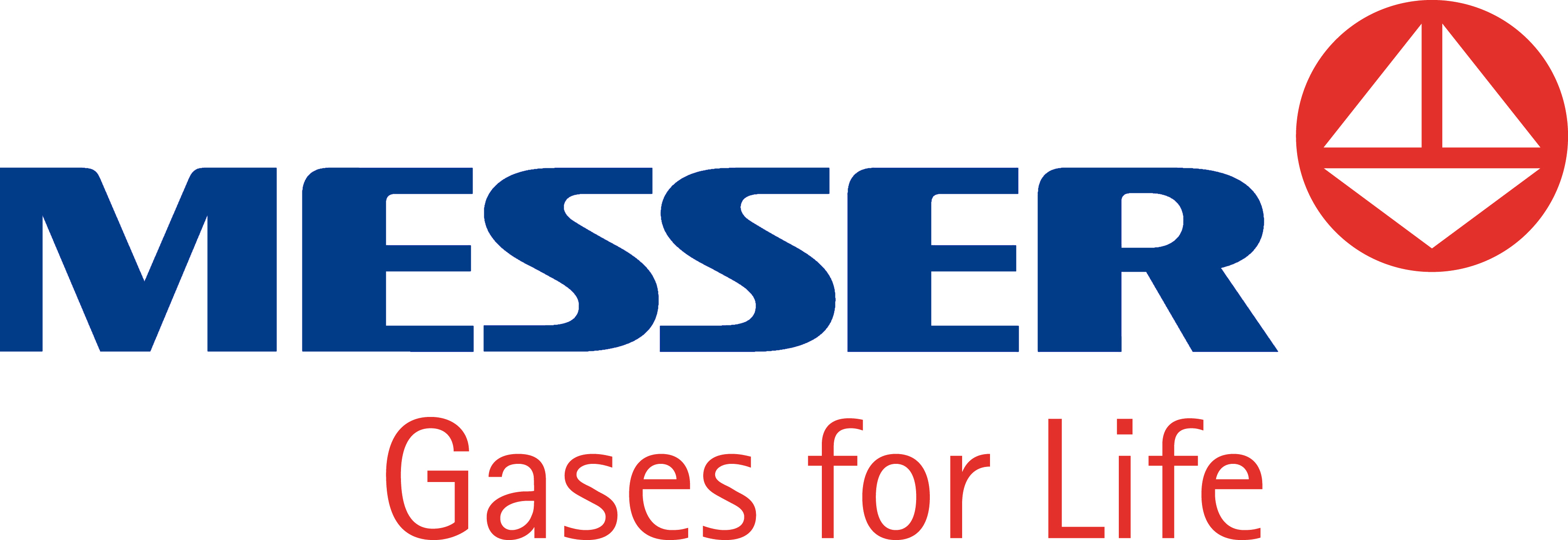News
gas aktuell No. 35, 1988
Cold against water penetration
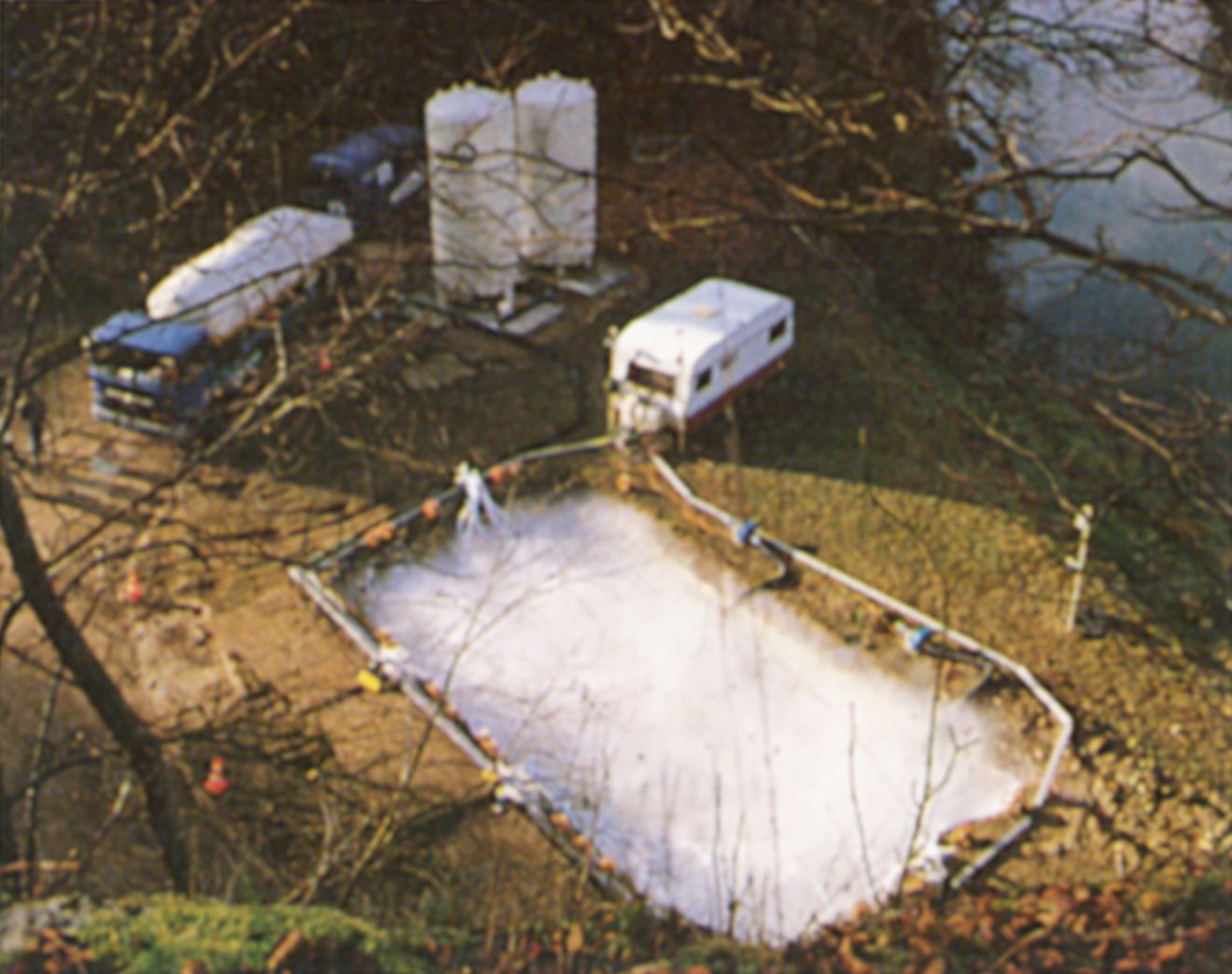
Freezing the ground dries up a construction site
Freezing the ground can be practical and beneficial even at smaller construction sites – as demonstrated by Messer Griesheim near Beuron, Germany. That’s where a potable water source had to be replaced directly on the banks of the Danube. Pumping out this construction site was technically unfeasible because the groundwater seeps through the earth at that point in quantities of up to 400 liters per second. Such high groundwater flow rates would have overwhelmed even conventional freezing. Instead, Krefeld’s customer service team installed a system of cryogenic lances, which were then used to inject liquid nitrogen along the entire periphery of the excavation site. Over the course of a little more than three days, this created an uninterrupted ice shell that served as an underground retaining wall against the groundwater. As a result, workers were able to access the damaged water distribution point without getting their feet wet.

Gase+Kälte No. 16, 1984
All under one roof
With investments totaling eight million Deutschmarks, Messer Griesheim has built a new filling facility and sales center for gases in Ludwigshafen-Nachtweide, Germany. This brings the gases and welding technology activities, which had previously been handled from several locations in Mannheim and Ludwigshafen, all under one roof.
gas aktuell No. 35, 1988
Expansion of gas research activities in Krefeld
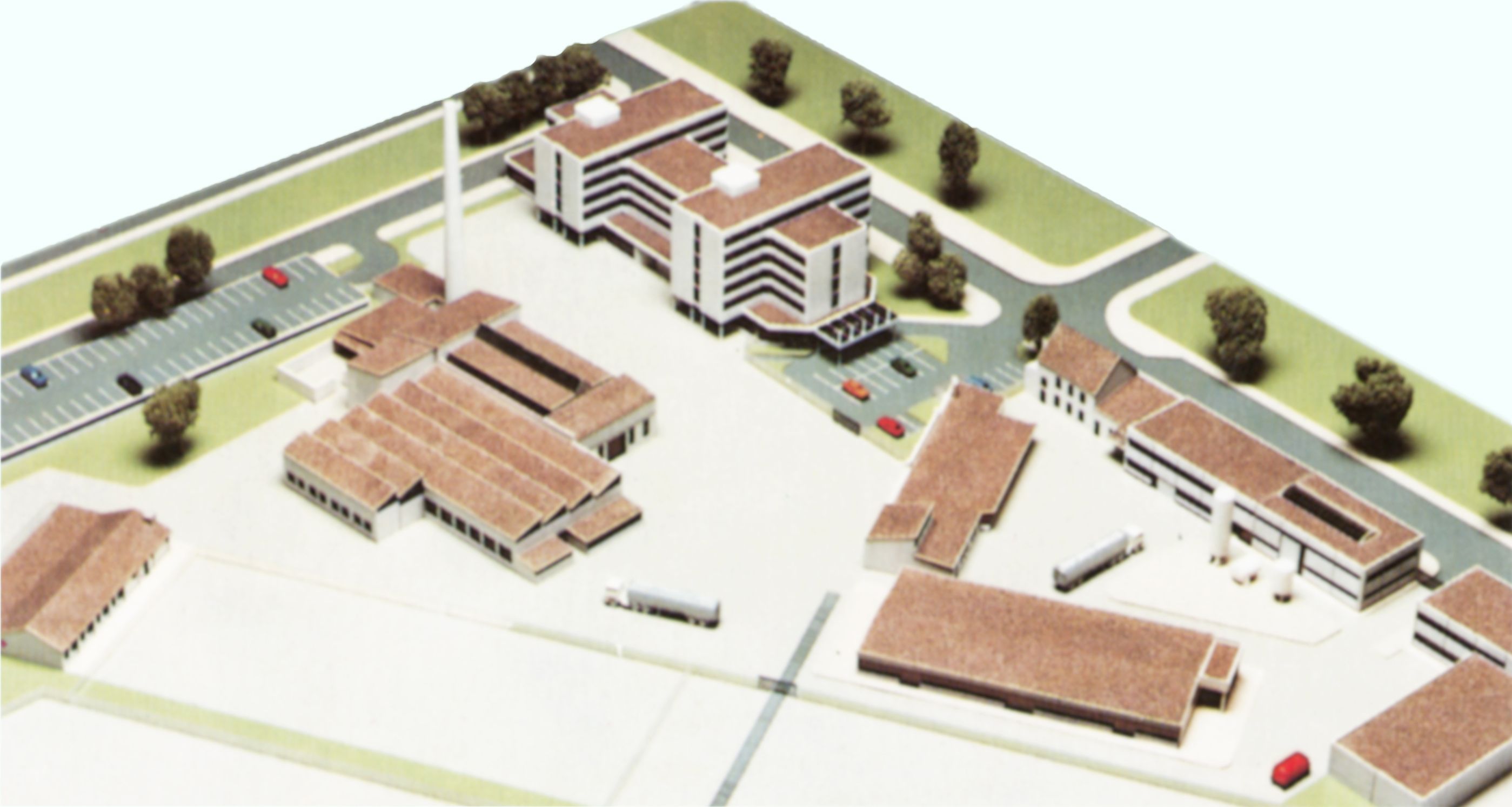
Technical Center Krefeld: Headquarters for application, engineering-oriented development activities and services
With a total investment of 12 million Deutschmarks, Messer Griesheim is expanding the “Technical Center Krefeld”. The first construction phase here will create 5,650 m² of additional floor space. Some 600 square meters of that are intended for training and information events. In Krefeld, new application methods are developed for the gases market. The work focuses on processes for metallurgy, food technology, chemistry, medicine and environmental protection. In-house workshops and laboratories create prototypes and custom-made products ranging from cooling tunnels to freezing hamburgers and special burners to melt steel to cold chambers to provide therapy for rheumatism patients. In addition, Krefeld is the call center for many of the company’s services. Starting from mid-1989, some 280 employees will be working in Krefeld.
gas aktuell No. 34, 1988
Repairing with cold
New thermal expansion variants

Installation: The made-to-measure gear wheel is guided towards and coupled to the cooled component. Once the part warms up again and expands, an interference fit is formed.
Just like heat shrinking, cold expansion uses the thermal expansion of materials to join round machine parts together. While shrinking creates a press-fit due to the shrinkage of a previously heated part after joining, in expansion liquid nitrogen is first used to cool the internal part (pressure member) down to -196 ºC. The cold part is then inserted into the matching machined part (tension element). Once the temperature equalizes, a friction connection is established. This well-known method surprises users time and again with new application variants. The use of cold expansion in repair operations has become increasingly widespread in recent years. Engine repair shops use the cold expansion method to replace valve guide bushings and value seat rings, for example. The Liquid Nitrogen Service of Messer Griesheim reported an unusual application at a Dillinger Hütte steel mill: Several 10-meter-long steel shafts had to be cooled there along a 30-cm-long section. Due to the large dimensions involved, immersing the entire shafts was out of the question. Instead, made-to-measure sheet metal boxes were built around the shafts, sealed, and filled with liquid nitrogen. The cooling caused the shafts’ prepared interference fits to shrink by about 0.5 mm. Each shaft was then inserted into the corresponding gear wheel with no exertion of force. Still almost entirely unknown, however, is the ability to use cryogenic effects to loosen interference fits on large machine components again. The prerequisite for this is that the pressure member must be hollow, i.e., have at least a 10-mm-diameter bore. When liquid nitrogen is fed into that hollow space, the part shrinks and the press-fit separates easily. For cryo-engineering, Messer Griesheim maintains a specially equipped customer service group that provides advice along with the necessary cooling medium.
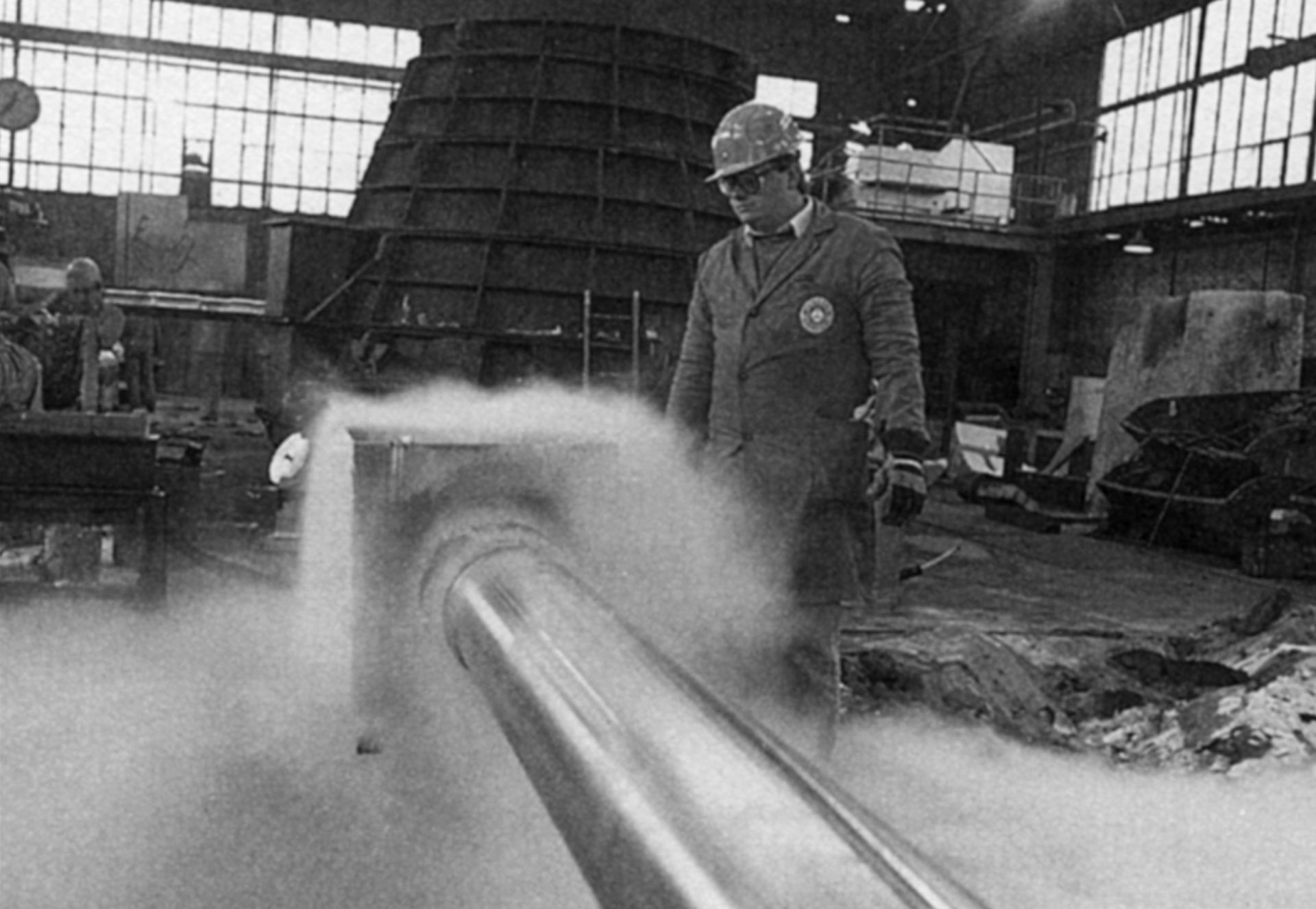
Preparation: Cooling with liquid nitrogen shrinks a section of a 10-meter-long steel shaft by a fraction of a millimeter.
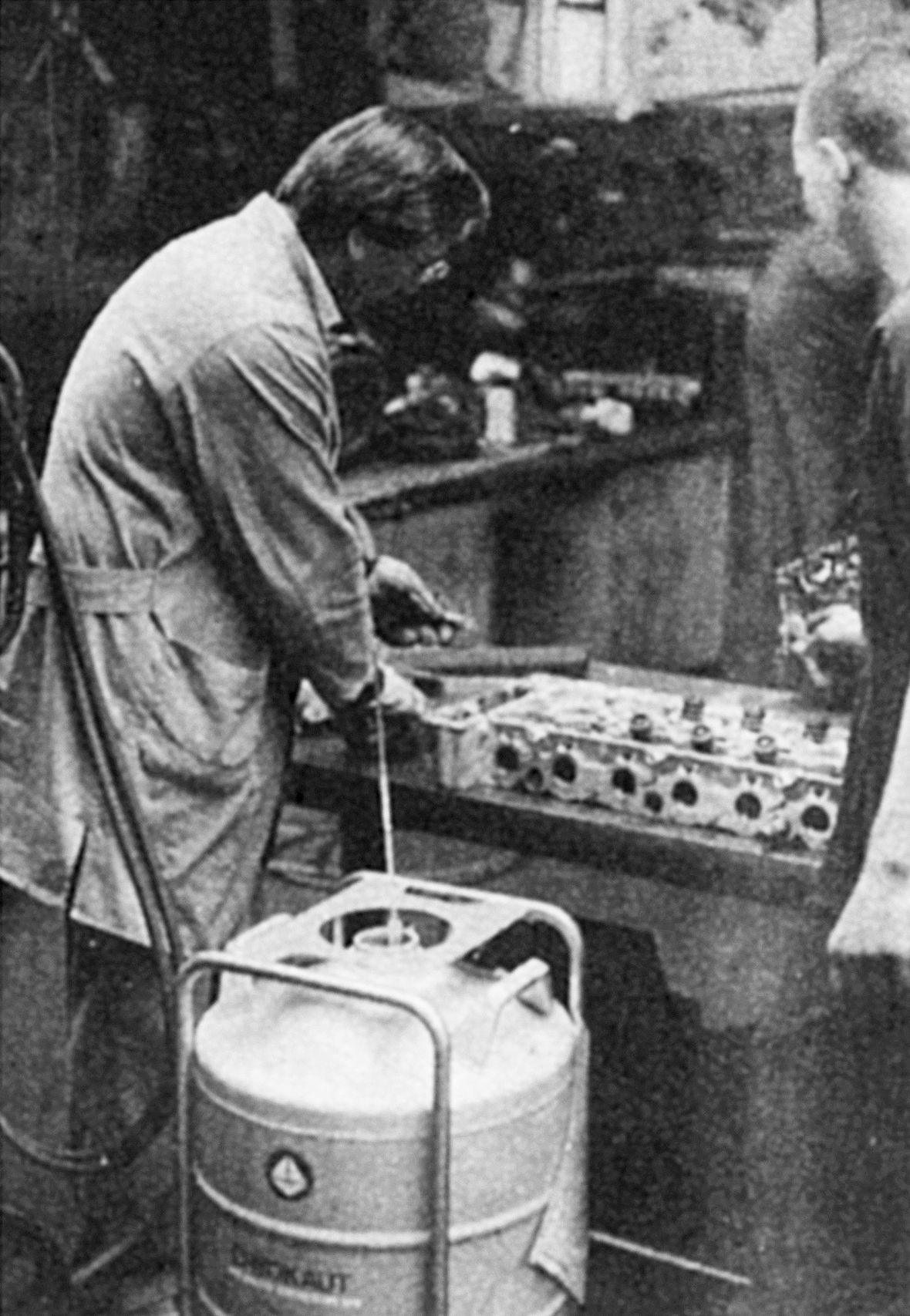
Using cryo-engineering to join valve guide bushings.
gas aktuell No. 44, 1993
Environmentally sound cleaning with dry ice
Small new device for mobile use

Now the Cold Jet Junior mobile unit permits gentle and environmentally sound cleaning, even in tight spaces.
The gentle, environmentally friendly dry ice blasting process Cold Jet from Buse Gase now has a “little brother”: The small mobile device Cold Jet Junior, which can be used independently of the separately installed pelletizer unit. So versatile it even fits through a standard doorway, this system offers all the benefits of the Cold Jet process: at a temperature of about -80 °C, dry ice pellets embrittle the coating that adheres to the workpiece. This severs its bond with substrate, making it easy to separate them. The system can be used to remove contaminants such as lubricants, corrosion inhibitors, release agents, production residues, resins and waxes. Blasting with dry ice pellets treats surfaces very gently and can be adapted to the properties of the specific workpiece by varying the process parameters within broad limits. The only waste to dispose of is the coating material, because the blasting agent itself literally vanishes into thin air. For the same reason, no blasting agent residues remain behind in the bore holes or undercuts of components, which could otherwise cause them to malfunction while in service. Complex disassembly can often be avoided. Moreover, cleaning with dry ice pellets eliminates the need to use organic solvents. Cold Jet Junior’s compact dimensions make it possible to use this blasting method directly in production. One person can deploy the system without any problem. A supply of pellets is produced in the separately installed pelletizer. They are stored in insulated boxes that protect them from ambient humidity and temperatures for up to three days. Cold Jet Junior is also equipped with a storage hopper for the pellets, a metering system, and an electrical cabinet. The blasting nozzle is available in a variety of shapes, enabling the user to adapt the unit to different requirements. The device is already being used successfully in the aerospace, plastics and rubber industries. Applications also include tool and die cleaning, building preservation, and contracting services.
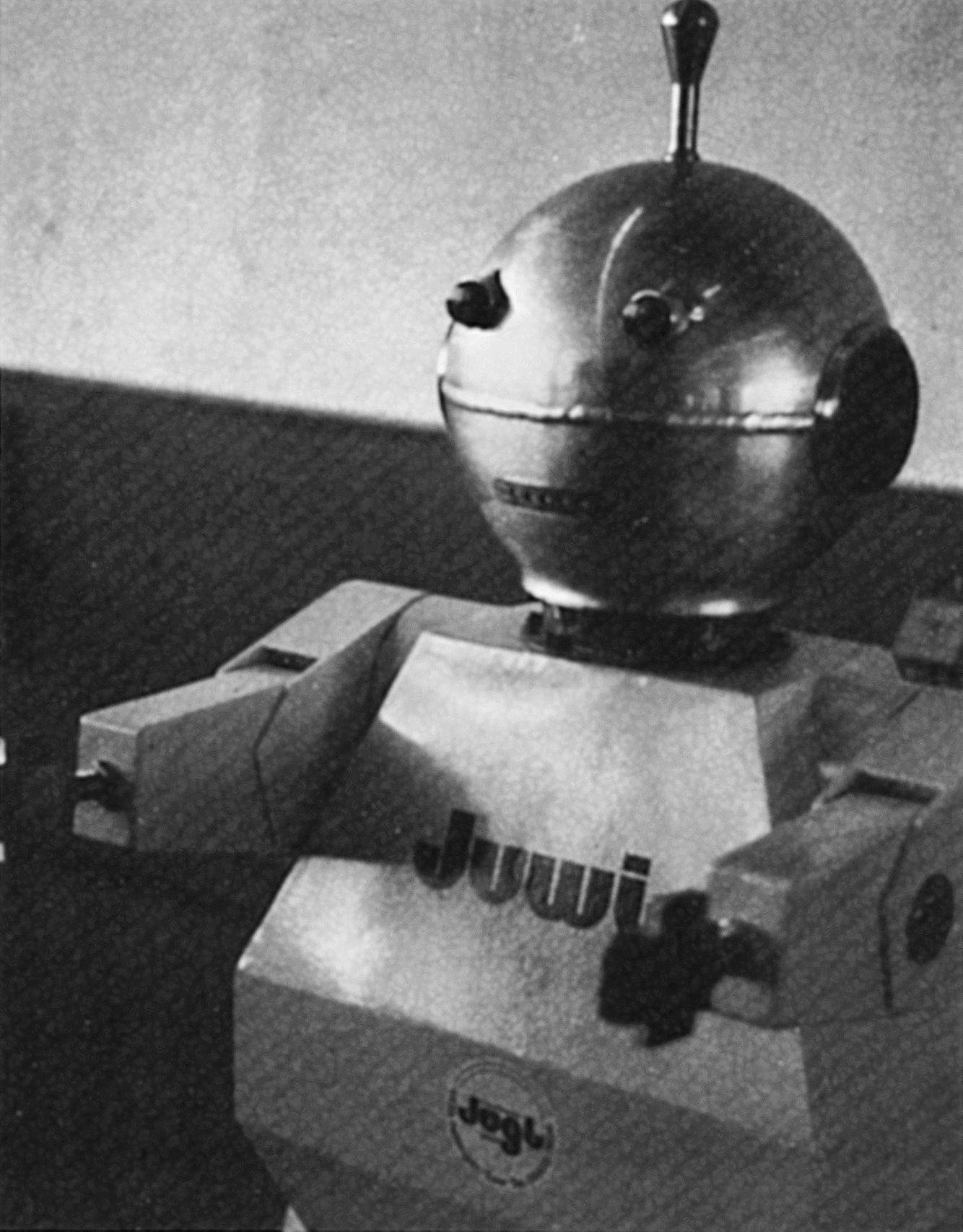
One touch of a button is all it takes for Juwi to flash his eyes and babble away.
Gase+Kälte No. 16, 1984
“Hello, my name is Juwi”
That’s how the bright yellow robot introduces himself in a creaky voice, chiming the name he was also given by his intellectual father: Willi Jugl (“Juwi”), mechanical engineer and owner of a machinery construction operation in Rehlingen, in the German state of Saarland. Jugl’s inventive spirit led him to design and build the robot Juwi, which served as a gag to draw many spectators at the Hanover Messe trade fair. The aluminum advertising media TIG-welded to its head, arms and hands can also be rented out to other companies on demand. At the touch of a button, he rattles off his little spiel in modern robotic musical tones. He is also programmed to light up his eyes, move his arms, and turn his head. For all of Jugl’s welding and cutting work, Messer Griesheim supplies the oxygen, argon, Corgon®, acetylene and propane from its Saarbrücken Works. It also provides technical advice and assistance whenever the machine builder encounters welding problems. Even Juwi’s sheet metal costume testifies to the versatility of welding with shielding gases.
